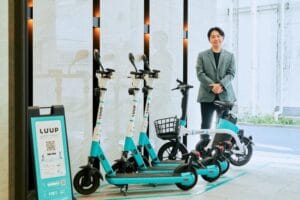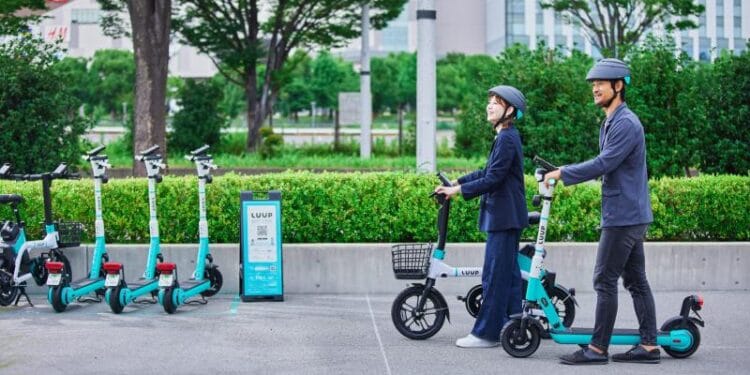In Tokyo, Luup electric scooters are becoming a go-to for fast and eco-friendly city transportation. These compact e-scooters, managed by Luup, Japan’s leading provider of e-scooters and e-bikes, are strategically placed around the city, making it easy for locals and tourists to pick up a ride at key spots like subway stations, convenience stores, and busy streets. As a flexible, affordable option for short-distance travel, they’re transforming how people move through Tokyo’s urban sprawl.
Why Luup Scooters are Capturing Attention
Luup scooters are widely praised for their portability and ease of access, allowing riders to skip Tokyo’s congested streets and crowded public transport options. Luup’s “norisute” system, meaning “ride and drop,” gives riders the freedom to leave the scooter at any official port, creating a seamless experience for anyone navigating Tokyo. For sightseers, this adds to the convenience of exploring the city’s vibrant neighborhoods and famous landmarks.
How to Use Luup Scooters: Step-by-Step Guide
If you’re interested in using Luup scooters on your trip to Tokyo, here’s a simple guide:
1. Get the Luup App: Available in English, the app allows you to set up an account and link a payment method.
2. Verify ID and Complete Safety Check: Users must confirm they’re at least 16 years old and pass a quick test on traffic rules, a requirement by Japan’s safety standards.
3. Locate and Unlock: Using the app, you can find nearby scooters and their battery levels. Select and scan the scooter’s QR code to unlock.
4. Begin Your Ride: Push off lightly, then use the handlebar throttle to reach up to 20 km/h. Stick to bike paths or designated areas to comply with traffic laws.
5. Return and Confirm: Park the scooter at any Luup port. The app prompts you to upload a photo for verification, and the fare is calculated based on ride time and distance.

Essential Rules and Safety Guidelines
Japan’s National Police Agency recently adjusted its policies on e-scooters, allowing unlicensed riders to operate Luup scooters at a max speed of 20 km/h, helmet-free. However, following these essential rules remains crucial:
Tokyo’s embrace of Luup scooters also marks a shift towards environmentally friendly transit, supporting the city’s broader goals to reduce its carbon footprint. With these scooters operating on electricity, they provide an eco-conscious alternative to short car trips, helping decrease emissions and traffic congestion. Tokyo residents and visitors alike are increasingly recognizing the benefits of micro-mobility, from easier parking to avoiding crowded subways. This shift is not only changing how people navigate the city but is also gradually reshaping Tokyo’s urban landscape, encouraging development that prioritizes pedestrian and scooter-friendly infrastructure.
– Stay in Designated Zones: Riders must use bike lanes or roads and are typically restricted from sidewalks. Keep left and be cautious of pedestrians.
– Observe Speed Limit: E-scooters can reach a max speed of 20 km/h in bike lanes or on roads, while on sidewalks, speeds must be kept to 6 km/h.
– Helmet Policy: Helmets are optional for unlicensed users, but safety experts recommend wearing one.
– Follow Traffic Laws: Obey all traffic lights, yield to pedestrians, and avoid restricted areas.
Pricing and Payment Options
Luup charges a base fare of 50 yen with an additional fee of 15 yen per minute. Subscriptions and time passes, offering unlimited rides within a set period, are available for frequent users, making this an attractive choice for commuters or long-stay visitors. Returning scooters to specific drop-off points can sometimes provide discounts, making the ride even more budget-friendly.
Luup scooters are a fresh way to see Tokyo, offering an easy, efficient solution for short trips around the city while supporting Tokyo’s push for cleaner transportation alternatives. As long as riders respect the local guidelines and traffic laws, Luup scooters make a convenient and enjoyable choice for urban travel.
For updates on Luup’s service locations and rules, you can consult sources like Japan Travel by Navitime and Unbordered Life for the latest information.
























